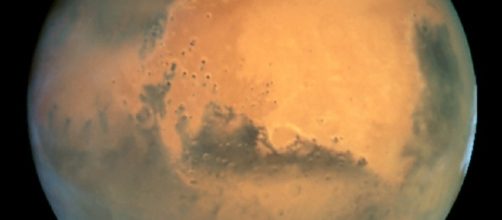Last year, at a space conference in Mexico, SpaceX CEO Elon Musk revealed his plans for colonizing Mars using a super-heavy-lift rocket called the Interplanetary Transport System. This year, at a conference in Adelaide, Australia, Musk refined his vision, including what he thinks is a way to pay for the enterprise.
The big rocket becomes a little smaller
The centerpiece of Musk’s plan is still a massive rocket, called the B.F.R., but about half the size and capacity than the one he announced in Mexico. The new version of the rocket would be two-stage, a booster and a spacecraft.
The B.F.R. would be capable of taking 150 metric tons to low Earth orbit. For a Mars expedition that would be 100 people in 40 private cabins, plus common areas, and the provisions to sustain them on the months-long interplanetary voyage. The rocket ship would be relatively cheap to fly because it is entirely reusable.
The plan to go to Mars
Musk has set out an ambitious plan to get to Mars. SpaceX will start work on the big rocket in the second quarter of 2018 with a goal of launching two uncrewed versions to Mars. This flight would be followed up by four rockets, two cargo and two with passengers that would fly to the Red Planet in 2024. Musk thus intends to start his Mars colony roughly ten years before NASA plans to have boots on the Martian soil.
Subsequent flights approximately every two years would bring more colonists and more material to build Musk’s million person city on the Red Planet.
How Musk intends to pay for the Mars program
Musk revealed that he plans to use the B.F.R. for every operation that SpaceX carries out, satellite launching, servicing the International Space Station, and even going to the moon.
The Falcon 9, Falcon Heavy, and the Dragon would be gradually phased out.
Also, the technology mogul suggested that the rocket could be used for point to point transportation on Earth. Passengers would take a ferry to an offshore launch pad and then ride the rocket to any other place on Earth in about 30 Minutes. Musk believes that servicing SpaceX’s customers will pay for his vision of a Mars colony.
Can Musk accomplish what he proposes to do?
The obvious question that arises is, can Musk do this? On the one hand, the SpaceX CEO has overpromised before. The Falcon Heavy is years behind schedule, for example. On the other hand, he has accomplished great things, such as regularly landing the first stage of the Falcon 9. All Musk has to do, is do what he says he will do, even if not according to the schedule he has set out for himself. Eventually, he will reach his goal and if he does, he will become the most significant person of the 21st Century.


